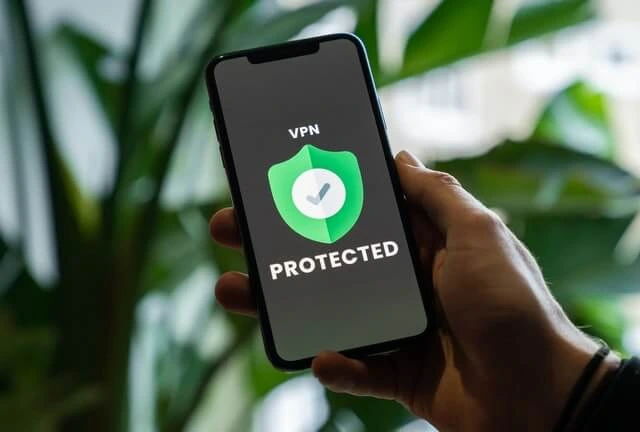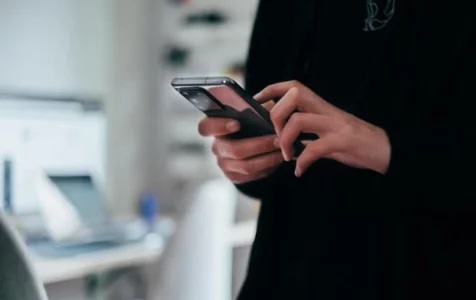In modern times, smartphones hold almost all types of sensitive data of their owners. They are used for payments, emails, social media, gaming, mental health helps, etc. That’s why it is incredibly important to make sure your information is safe and sound.
Potential Risks
The number of cyber security threats and identity theft schemes grows every day. And it is also pretty common for people to lose their devices. So whether you are professional handling business tasks via your phone or a student using it for research, you need to stay alert.
Students are particularly prone to data breaches as they often use public Wi-Fi networks. Some might disregard precautions when they need to find something online.
When researching information for a paper or trying to find an academic help platform, it’s important to stay away from untrusted web sources. Ask your friends for advice to find services like the WritePaper that offer all the needed services for students. In turn, they apply advanced data protection measures to keep all the information safe in their databases.
Another risk is losing your personal belongings, which can give scammers access to all the sensitive information stored on your phone. According to ChannelProNetwork, 70 million smartphones are lost or stolen every year. Unfortunately, only 7% of them are ever recovered. So even if you are very careful with your device, the risk is always there.
And with all of the data on personal information and payments being there, it poses risks of your identity, money, or accounts being stolen. When it comes to professionals, they also risk sensitive corporate information, which potentially can cause a lot of damage to their work.
Fortunately, there are several features one might use to protect their devices. Here are the main ones to incorporate into your life.
Update Password
It is the simplest step a lot of people miss out on. According to a Customer Reports study, 64% of mobile device users do not use a passcode. It is an irresponsible practice.
Set a password and make sure your device locks in when you do not use it. Do not use the factory code; change it to a new one. The standard practice is to use at least 6 digits. Also, try not to set obvious things as a code, for example, your birthday or marriage date.
The more random it is, the better. Also, do not use the same code for two accounts. If you are worried about forgetting one of them, there is always a way to restore it. Or you can opt for a secure password manager application.
Download Apps Wisely
One of the easiest ways to get malware or virus on your smartphone is by downloading a scam application. There are ones that collect bank account information, for instance. Sure, everyone needs apps to be more productive, study better, or stay more organized. But you need to be selective.
Here are some tips on that:
- Download them only from the App Store or Play Market. These platforms do a decent job of making sure the published software is safe to use.
- Check reviews beforehand to see what others have to say;
- Be selective with financial apps. The main red flag is if they ask you to repeatedly fill in your private information;
- Android users can disable “Unknown Sources” downloads in the setting;
- Read through the things an application asks for access to. Choose to give access only “when using the app” for the microphone, location, camera, or contacts.
If the software asks for access to something unreasonable, look for a more credible substitute. For example, a flashlight application has no business asking to access your GPS.
Enable “Find My Phone”
This feature is useful not only to recover a lost device. It also ensures that you can remotely wipe the device completely.
Yes, having an air tag might be worth it if you keep forgetting where you left your smartphone. But being able to remotely delete all information is a must-have.
For an iPhone, go to “Find My Phone” and sign in to your iCloud account. Android devices have similar functionality. Just go to Settings – Security – Find My Device. Make sure it is on. After that, in case your device is lost or stolen, you can wipe it clean through a desktop browser via your laptop. One can also use the same functionality for wireless earphones or other wearable gadgets.

Use VPN
If you need to access unprotected networks like public Wi-Fi, invest in a VPN application. Virtual Private Network software protects your data when you are online. They hide your actual location and make it seem like you are browsing from any other part of the world.
This is particularly essential if you are checking your bank account or doing any shopping through such networks. VPN encryption makes sure no one can track your activity.
Set Automatic Updates
Software updates often include security fixes and new protocols. As new threats arrive, providers, keep the operating systems up to date. This means you need to regularly update your devices. This also goes to any third-party applications you have.
To set this, go to Settings – Network Preferences – Automatic updates. You can select to download those when you are using Wi-Fi, for example, to not pay for mobile internet usage.
Know Your IMEI
IMEI stands for International Mobile Equipment identity. It is a unique code that any device has. Write it down and store it somewhere safe. One can find it in the Settings or behind the battery of the phone.
This is helpful in case it gets lost or stolen. In such a case, knowing this code will speed up the recovery process.
Back-Up the Data
There are two ways to do it – manually or by synchronizing with the cloud storage. It ensures that all the information is saved outside of the smartphone. For instance, if you lose it and wipe it clean remotely, you still have all your pictures, music, documents, or contacts in the cloud.
This is helpful in cases of errors in the software as well, which can lead to information loss.
Use Antivirus And Firewall
There is no reason to treat your mobile tool differently than you’d treat your laptop or PC. That’s why you need good anti-virus software and a firewall app to protect your online presence. If you do not have it, your phone is vulnerable to a multitude of cyber threats.
It makes sure you are safe from malware or viruses. And you can also be cautious about what data is collected and how to prevent it.
Set Two-Factor Authentification
Yes, it might be a bit annoying to go through this process sometimes as it takes a bit longer. But there is no such thing as being too secure when it comes to personal information.
Two-factor authentification means that every time you log into your Google account or banking account, you need to also put in a one-time-use code sent to you.
In Summary
Cyber threats and identity theft are not to be taken lightly. When all your private data is on your mobile device, you must ensure it is properly protected with all the available features and solutions.
